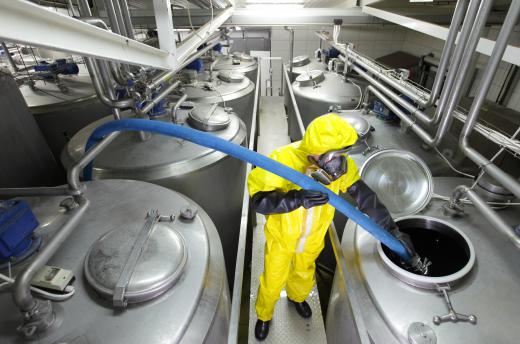Centrifuging is a process where a material is spun in a cylindrical chamber that rotates around a fixed axis to utilize both sedimentation processes and the force of centripetal acceleration to mechanically separate mixed materials from each other. Though centrifuges are used in a laboratory setting to purify biological samples and in large numbers to enrich uranium for nuclear fuel, they are also common in manufacturing for many purposes, including to process waste water by municipalities and to produce pharmaceuticals or live drug cultures such as vaccines. Other common manufacturing arenas that utilize centrifuging are the food processing industry, mining and mineral processing, and chemical processing in general.
Spinning materials via centrifugal force causes mixtures of materials with different densities to separate in two key ways. Heavier or denser materials gravitate both towards the bottom of the centrifuge and towards the outer wall of the cylinder, while lighter materials are less affected by the centrifugal force and stay closer to the center of the spinning axis where they can be removed during the spinning process. In food purification and manufacturing, centrifuging is commonly used to separate sugar crystals from a mother liquor material produced earlier in refining. Centrifuges are also widely used in the dairy industry to spin raw milk into cream and milk that is lower in fat than the original product.

Where centrifuging is used to separate dense solids from mother liquors or similar liquids from one another, they spin with such a force as to exceed the pull of gravity by a factor of 1,000 to 20,000 times. These types of centrifuges can be built upon one of six types of designs, including the hydroclone, tubular, and chamber bowl designs that utilize sedimentation properties to separate materials. The imperforate basket, disk stack separator, and decanter designs all require manual or mechanical removal of lighter materials once they are separated from denser compounds. Regardless of the centrifuge design, however, all models use either sedimentation or a filtering screen such as with the perforate basket model to isolate materials from each other.
There are estimated to be about 200 specific industrial fields for which centrifuging is needed as of 2011. Since each of these industries has unique requirements, centrifuges cannot be mass produced like other common mechanical equipment such as motors or valves. This makes centrifuge equipment more expensive than other types of industrial hardware, and it often cannot be reused or resold for other purposes.
Centrifugal casting, for instance, requires special metal casting equipment that can withstand the temperatures of molten metals and other crystalline materials such as iron, copper, and glass. The casting molds themselves are spun within the center of the centrifuge around their main axis, as liquid metal is fed in and thrown against the walls of the mold where it solidifies. This process forces lighter impurities in the metal to the interior surface of the mold, which can later be abraded away to make a more reliable and durable product.
